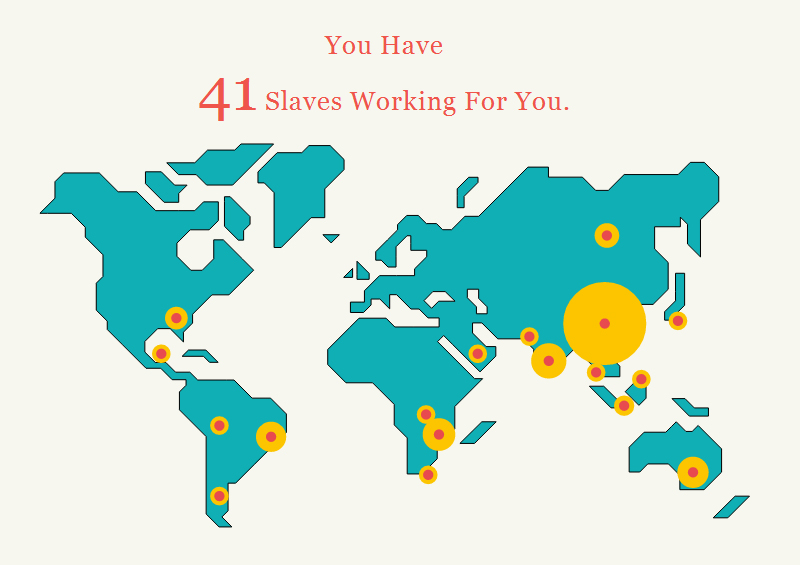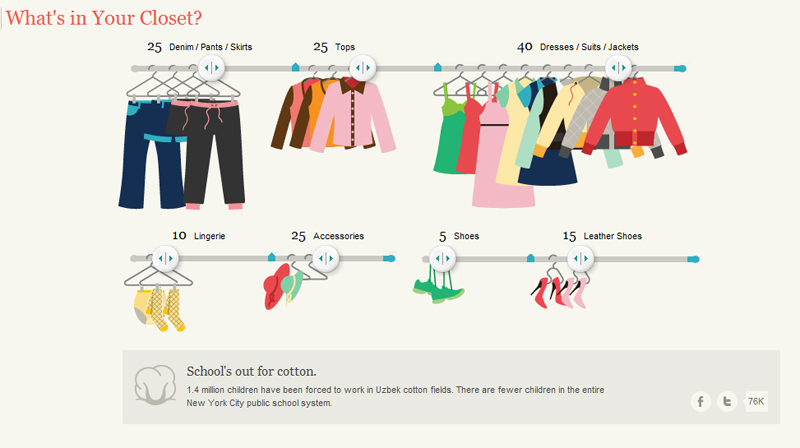How Many ‘Slaves’ In Your Closet?
by The Fashion Cult

I have 41 slaves working for me. That is, according to a survey taken on slaveryfootprint.org. The web app uses pretty graphics and a slick interface to query visitors about what they eat, what they own, and how they live. At the end you find out just how big of a slave master you are, you Western asshole, you…
But cynicism aside, this site truly is a great resource for understanding why the lifestyle of the average American is incredibly taxing on the planet’s resources – which include people. I have a knee jerk aversion to causes that appeal to you via guilt or pity (which, mind you, is far different from compassion); and this site uses a touch of both. Still, it’s a great tool to shed a new light on your way of life. Where does your stuff come from? Where does it go? Sadly, many of us in the so-called developed nations often float through life without ever asking.
Naturally, the portion of the survey that asked about my closet gave me the most pause. I love fashion as art & craft so it’s easy for me become a “collector.” However, The Fashion Cult Manifesto holds Quality-over-Quantity as a supreme tenet so I’ve been working on pairing down my wardrobe to only the best and most useful things. In my mind, buying fewer but better quality garments (and then learning to care for them) is the best way to sartorial sustainability.
Like electronics, fashion these days comes churning out of the slave-driven factories with built-in obsolescence – a dastardly device of economy that is the very essence of evil… IMHO. Those of us that believe in changing the world for the good can and must do better. Through a fashion lense, it means skipping the latest polyester-laden fast-fashion mash-up in favor of well-made secondhand items. This, along with saving my pennies for the very occasional splurge on a beautifully crafted high-end item, is my approach to being responsibly stylish.

If even half of the world’s top consumers starting living the Q-o-Q life the insane supply chain that produces slavery and other gruesome work conditions would be disrupted. Wouldn’t it?
Built-in obsolescence is something many of us have come to expect, whether consciously or not. The concept is so common to our way of life, yet seemed starkly sinister when it was first named for me by The Story of Stuff, seen below.





[…] however, probably matches the length of life I can expect from my Apple product’s diabolical built-in obsolescence. Both are definitely a blip in my attempts to follow the Manifesto. The Root Cases website says the […]